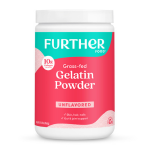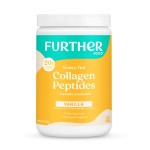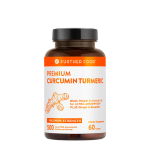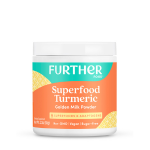What is the Paleovedic diet? It combines principles of the Paleo diet philosophy with that of Ayurveda - specifically eating colorful, nutrient dense foods. Functional medicine expert, Dr. Akil, coined the term Paleovedic Diet and explains in this article why Americans AREN’T getting enough nutrients and 10 ways to increase the nutrient density of what you’re eating!
We’ve all heard that we need to eat more fruits and vegetables. But it’s not that simple. In fact, some fruits and vegetables are better for you than others. As a functional medicine doctor, I focus on helping my patients maximize the nutrients in their food. I call my approach to eating the Paleovedic diet: it consists of eating nutrient dense foods and a diet that is customized to your Ayurvedic body type.
Studies show that the majority of Americans are lacking in micronutrients, which include vitamins and minerals, as well as phytochemicals, the compounds in plants that protect us against disease. These deficiencies put us at risk for diseases such as diabetes, cancer and other chronic illnesses. Part of the problem is that our food supply is different than it was years ago. In our world of industrialized food, the trend has been to make fruits and vegetables larger, sweeter, and more attractive, resulting in the loss of phytochemicals.
Also, Americans often choose the least nutritious options when it comes to fruits and vegetables. Every year we eat 57 pounds of iceberg lettuce and 142 pounds of potatoes (mostly in form of French Fries!) per person. These are by far the least nutrient-dense foods you can eat! And while a lot of people think they can just take a vitamin in pill form, there is a significant difference between whole foods and supplements. Taking supplements or eating enriched or fortified foods is just not the same as consuming the nutrient directly and naturally from a whole food source.
To maximize the antioxidants and phytochemicals in our food, we need to make sure we are eating the right types of fruits and vegetables, prepared in the most nutrient-dense way. Here are some of my favorite nutrient-dense foods and ten ways to maximize the nutrients in these fruits and vegetables:
- Eat dark colored fruits and vegetables: Eat lots of red, purple and orange fruits and vegetables. The more deeply colored, the more phytonutrients. Also, most of the plant’s antioxidants are on the skin or just below it, so try to eat the skin too. (Buy organic when possible.) Avocados are a great source of nutrients and while we can’t eat the skin, make sure to scoop out all the flesh from the shells —the part that is closest to the skin contains the most antioxidants.
- Detoxify with beets: One of my favorite foods is beet greens. Most of us know that beets are a nutrient-dense food, but did you know that the leafy greens at the top of the beet are richer in antioxidants than the root itself? These leafy beet greens are also a rich source of multiple compounds that support healthy liver function. I recommend eating beet greens regularly to detoxify.
- Make sure you eat the right type of lettuce: Lettuce is one of the most common greens we consume. But the most popular lettuce is iceberg, which doesn’t have many phytonutrients, only a little fiber. Romaine is a much better choice for a nutrient-dense food, and radicchio, arugula and green loose leaf are best for optimal health. Try lettuce wounding: tear up the lettuce before putting it into the fridge. It will double in antioxidant value overnight. This is because antioxidants are how plants defend themselves. By tearing up the lettuce, the antioxidants start working as a defense mechanism and more phytonutrients are produced.
- Sometimes white foods can be good for you: Cauliflower is an exception to the rule that bright-colored fruits and veggies are best. White cauliflower, like all cruciferous vegetables, is packed with cancer-fighting compounds. If you can find purple or orange cauliflower, try them too, as they have an even higher amount of nutrients.
- Sweet potatoes aren’t just for Thanksgiving: Americans typically only consume about three pounds of sweet potatoes per person a year, and that’s usually either topped with marshmallows or in a pie. The antioxidant value and healing power of sweet potatoes is widely underestimated (without all the sweet toppings of course). Sweet potatoes have a lower glycemic content than regular potatoes, meaning they won’t raise your blood sugar as much as a regular potato. Try purple sweet potatoes, too, if you can find them.
- Give your garlic time to rest: Garlic is the universal healer and has been found to contain almost 100 phytochemicals. But if you don’t use it the right way, you don’t get the anti-cancer and disease fighting benefits. The main compound in garlic needs about 10 minutes to become active. So the garlic has to be crushed or mashed for the enzymatic process to begin that makes the antioxidants active. When you are cooking with garlic, crush or dice and then let it sit for 10 minutes before putting it in your recipe.
- Some onions are better than others: Onions add a lot of flavor and healthy phytonutrients. The most nutrient-dense food in this group are scallions. Leeks and red onions contain a lot of antioxidants, too, while white and sweet onions have the least amount of nutritional benefit.
- Cook tomatoes for maximum nutrition: Smaller and darker is better. Cherry tomatoes have three times more of the powerful antioxidant lycopene than larger tomatoes. And while some vegetables offer the most nutrient value when eaten raw, tomatoes become more nutrient dense and have even more healing power when cooked. Cooking tomatoes changes the shape of the lycopene molecule and helps you absorb the phytonutrients better. Add tomato sauce and tomato paste to your diet.
- Spice it up: In Ayurvedic medicine, spices are considered medicinal and crucial in preventing chronic disease. They are a great source of antioxidants and have powerful healing properties. Spices are one of the most nutrient-dense foods, second to organ meats. Spices like turmeric, ginger and cinnamon are great for reducing inflammation, which is one of the root causes of most modern diseases such as heart disease, cancer and diabetes. Additionally, spices help improve digestion and in maintaining healthy blood sugar and metabolism. Plus, they make your food taste better!
-
Incorporate some of my other favorites foods into your diet: Cabbage is one of the most consumed vegetables in the world, however most of it is in the green form. I prefer red cabbage which is four times as nutritious as green cabbage. It’s the most nutrient dense when eaten raw, so throw some into your salad or make a slaw out of it. Or, look for sauerkraut made out of red cabbage for a good source of fermented vegetables. And some of my favorite fruits include papayas, mangos and nectarines.
These nutrient-dense foods have a lot of phytochemicals, Vitamin C and fiber. Try to eat them regularly. Most importantly, healthy eating should be fun. There are so many great ways to prepare and eat fruits and vegetables. And remember, by maximizing the micronutrients you get from your fruits and vegetables, you are ensuring that you are eating nutrient dense foods and maximizing your long term health.
Protect your body with Superfood Turmeric
BE HEALTHY EVERY DAY with Further Food Collagen Peptides! Collagen heals your body from the inside out. Learn more here!
Want to read more?
What is Your Doctor Not Telling You? 5 Top Functional Medicine Doctors Tell All
Why You Could Be Doing Paleo All Wrong. The One Change This Doctor Says You Need to Make
12 Guiding Principles to Eating Ayurvedically An Easy 10-Step Guide to Healing with Food By Dr. Wahls
*These statements have not been evaluated by the Food and Drug Administration. This product is not intended to diagnose, treat, cure, or prevent any disease.

























